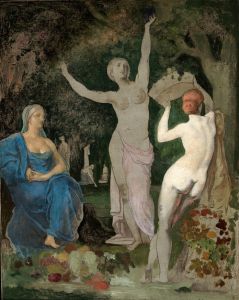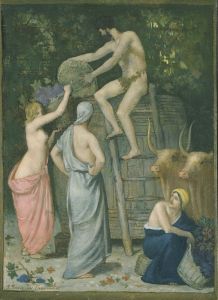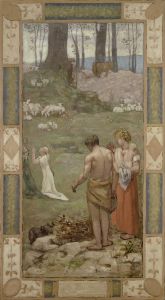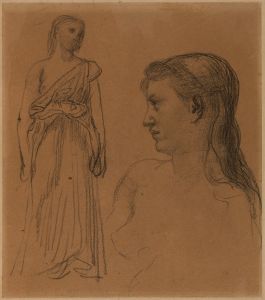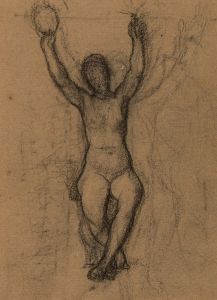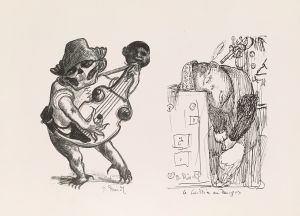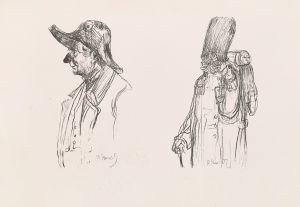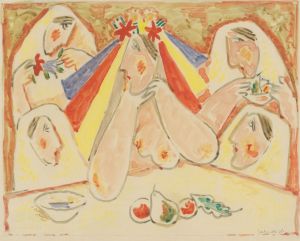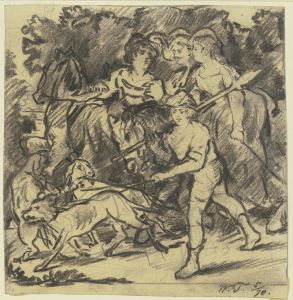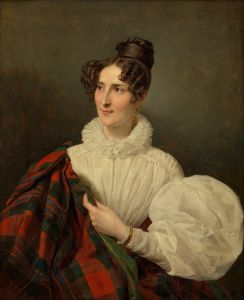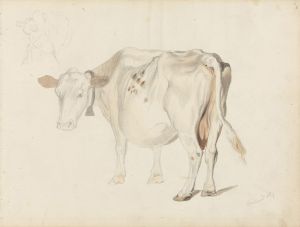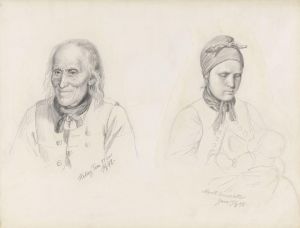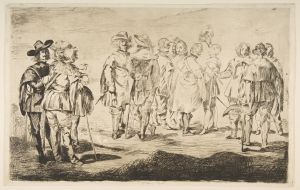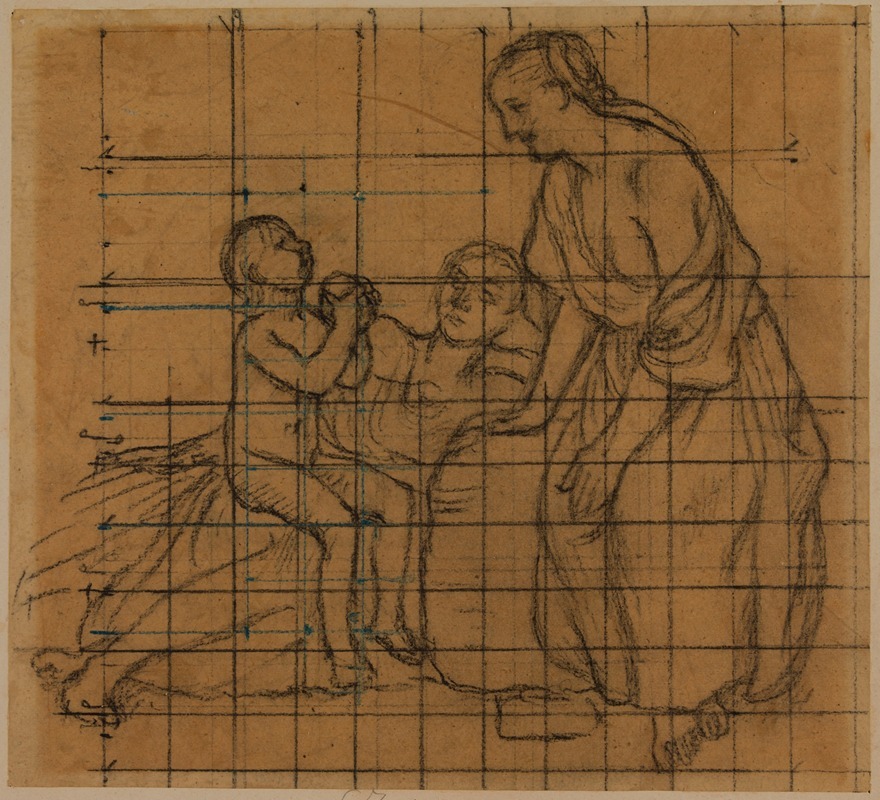
Groupe composé de deux femmes et d’un enfant
A hand-painted replica of Pierre Puvis de Chavannes’s masterpiece Groupe composé de deux femmes et d’un enfant, meticulously crafted by professional artists to capture the true essence of the original. Each piece is created with museum-quality canvas and rare mineral pigments, carefully painted by experienced artists with delicate brushstrokes and rich, layered colors to perfectly recreate the texture of the original artwork. Unlike machine-printed reproductions, this hand-painted version brings the painting to life, infused with the artist’s emotions and skill in every stroke. Whether for personal collection or home decoration, it instantly elevates the artistic atmosphere of any space.
Pierre Puvis de Chavannes was a prominent French painter in the 19th century, known for his mural paintings and contributions to Symbolism. One of his works, "Groupe composé de deux femmes et d’un enfant," reflects his distinct style and thematic focus. While specific details about this particular painting are limited, we can explore the broader context of Puvis de Chavannes' work and his artistic approach.
Puvis de Chavannes was born on December 14, 1824, in Lyon, France. He initially pursued a career in engineering but later turned to painting, studying under several artists, including Eugène Delacroix. His early works were influenced by the Romantic style, but he gradually developed a unique approach that set him apart from his contemporaries.
Puvis de Chavannes is best known for his large-scale mural paintings, which often depict allegorical and symbolic themes. His work is characterized by a subdued color palette, simplified forms, and a sense of timelessness. He sought to create art that transcended the specificities of time and place, aiming for a universal appeal. This approach is evident in many of his works, where figures are often depicted in serene, idealized landscapes.
The painting "Groupe composé de deux femmes et d’un enfant" likely embodies these characteristics. While specific information about this work is scarce, it can be inferred that the composition includes two women and a child, a common motif in Puvis de Chavannes' oeuvre. His paintings often explore themes of family, nature, and the human condition, and this work may reflect similar themes.
Puvis de Chavannes' influence extended beyond his own time, impacting later artists and movements. His emphasis on flat, decorative surfaces and symbolic content resonated with the Symbolist movement, and his work was admired by artists such as Paul Gauguin and Georges Seurat. Additionally, his murals in public buildings, such as the Panthéon in Paris and the Boston Public Library, cemented his reputation as a leading muralist of his era.
Despite the lack of detailed information about "Groupe composé de deux femmes et d’un enfant," it is clear that Puvis de Chavannes' work continues to be appreciated for its aesthetic qualities and thematic depth. His ability to convey complex ideas through simple, harmonious compositions has left a lasting legacy in the art world.
In summary, while specific details about "Groupe composé de deux femmes et d’un enfant" are limited, understanding Puvis de Chavannes' broader artistic context provides insight into the potential themes and style of the painting. His work remains a significant part of art history, celebrated for its unique blend of symbolism, simplicity, and universal appeal.





